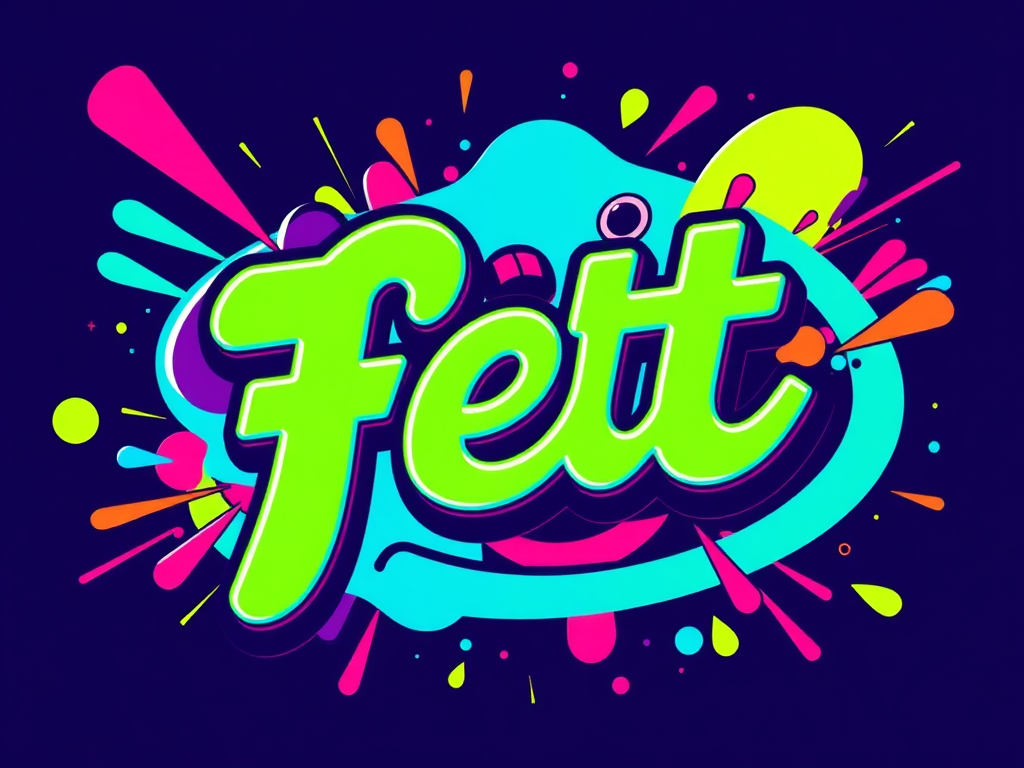The language we use in our daily communication constantly evolves, with words and phrases taking on new meanings depending on context and cultural shifts. One such term that has gained popularity, particularly among younger generations and online communities, is “fett.” Understanding the fett meaning is crucial for effective communication across different professional settings and casual conversation environments.
This comprehensive guide explores the definition of fett, its various meanings, and provides you with alternatives to fett that suit different communication styles and professional contexts. Whether you’re navigating workplace communication or engaging in informal conversations, knowing when and how to use appropriate language variations can significantly impact your communication effectiveness.
Fett Meaning: Understanding the Core Definition
The fett meaning varies significantly depending on the language and context in which it’s used. Originally, “fett” comes from German and Swedish languages, where it literally means “fat” or “grease.” However, in modern slang usage, particularly in English and international communication, the term has evolved to carry entirely different semantic connotations.
In its colloquial usage, fett typically means something impressive, cool, or excellent. This transformation from a literal meaning to a positive evaluation demonstrates how language adapts within different subcultures and communication contexts. The word meanings shift based on cultural expressions and social language patterns.
Historical Context and Evolution
The evolution of fett from its original German and Swedish roots to its current slang usage illustrates the dynamic nature of language. In German, “fett” traditionally described something fatty or oily, while in Swedish, it carried similar meanings. However, as international communication expanded and online communities grew, the term began acquiring new semantic properties.
The linguistic expressions surrounding fett demonstrate how cross-cultural communication influences language development. Younger generations adopted the term, giving it positive sentiment rather than its original neutral or sometimes negative connotations. This shift represents a broader trend in language learning and vocabulary building where words transcend their original cultural context.
Modern Usage Patterns
Today’s fett definition encompasses several evaluative dimensions. When someone describes something as fett, they’re typically expressing:
- Admiration for quality or performance
- Enthusiasm about an experience or object
- Approval of someone’s actions or achievements
- Excitement about upcoming events or opportunities
Understanding these pragmatic functions helps in contextual communication and ensures language appropriateness across different social situations.
What Does “Fett” Mean in Different Contexts?
The meaning of fett shifts dramatically based on the communication context and audience. In professional exchange settings, using fett might not convey the intended respect or clarity needed for effective business communication. However, in casual conversation among friends and family, it can add finesse and laid-back charm to your expressions.
Professional Settings and Workplace Context
In professional settings, the fett meaning may not translate effectively. Corporate communication typically requires formal language and standard English expressions that convey professionalism and clarity. Using slang terms like fett in business correspondence or professional writing might undermine your credibility or create confusion among colleagues.
Professional vocabulary serves specific pragmatic functions in workplace communication. When you need to express praise or appreciation in a professional context, choosing alternatives that maintain professional tone while conveying positive sentiment becomes crucial for communication effectiveness.
Casual and Informal Conversations
In informal conversations, fett serves as an effective expression of enthusiasm and approval. Friends and family often appreciate colloquial language that feels natural and authentic. The communication style in these settings allows for more linguistic flexibility and creative expression variations.
The tone in casual conversation can accommodate slang and informal expressions without compromising communication quality. However, even in informal settings, being mindful of your audience and their cultural background ensures respectful communication.
The Importance of Tone in Communication
Tone represents one of the most critical aspects of effective communication. The fett meaning and its impact on communication depend heavily on the tone you establish and maintain throughout your interaction. Understanding how tone affects meaning helps you choose appropriate alternatives and variations for different situations.
Paralinguistic Features and Meaning
Tone functions as a paralinguistic feature that significantly influences how others interpret your words and phrases. When using fett or its alternatives, the tone you employ can:
- Enhance positive communication and supportive expressions
- Demonstrate cultural sensitivity and social appropriateness
- Establish rapport and connection with your audience
- Convey authentic enthusiasm and genuine appreciation
Register Adaptation and Context
Language register refers to the level of formality appropriate for specific communication contexts. Professional register requires different vocabulary and expressions compared to casual register. Understanding register variation helps you select the most effective alternatives to fett for your specific situation.
Communication training often emphasizes the importance of register adaptation. Language proficiency includes not just knowing words but understanding when and how to use them appropriately across different social and professional contexts.
Polite, Professional, and Casual Alternatives to Fett
Choosing the right alternative to fett depends on your communication goals, audience, and context. Here are comprehensive alternatives organized by appropriateness and register:
Impressive: A Professional Alternative
“Impressive” serves as an excellent professional alternative to fett. This word conveys admiration and approval while maintaining professional standards. In workplace communication, describing someone’s performance as impressive demonstrates respect and constructive feedback.
Impressive works effectively in:
- Performance reviews and evaluations
- Business presentations and reports
- Professional correspondence and emails
- Corporate meetings and discussions
The semantic properties of impressive align with professional communication expectations while still conveying positive sentiment and genuine appreciation.
Remarkable: Elevating Professional Language
“Remarkable” adds sophistication to your professional vocabulary. This alternative suggests something exceptional and noteworthy, making it perfect for formal settings where you need to express strong approval or admiration.
Remarkable applications include:
- Academic and research contexts
- Executive communication and leadership language
- Client interactions and customer service
- Public speaking and formal presentations
Awesome: Bridging Casual and Semi-formal Contexts
“Awesome” has evolved from slang to become widely accepted in semi-formal contexts. While not as formal as impressive or remarkable, it conveys enthusiasm and positive energy effectively across various communication settings.
This versatile alternative works in:
- Team building and motivational contexts
- Creative industries and innovative workplaces
- Customer engagement and marketing communication
- Educational settings and training programs
Excellent: Standard Professional Language
“Excellent” represents standard professional language that communicates high quality and strong approval. This word maintains professionalism while clearly expressing positive evaluation.
Professional applications for excellent:
- Quality assessments and reviews
- Customer service and client feedback
- Educational evaluations and grading
- Performance recognition and awards
Amazing: Expressing Enthusiasm Professionally
“Amazing” balances professional appropriateness with emotional impact. This alternative conveys genuine excitement and admiration while remaining suitable for most professional contexts.
Effective usage contexts:
- Project completion celebrations
- Achievement recognition and praise
- Innovation acknowledgment
- Team success communication
Cool: Maintaining Casual Authenticity
“Cool” serves as a direct alternative to fett in casual conversations. This familiar slang term maintains the laid-back tone while being more widely understood across different cultural backgrounds.
Casual applications:
- Friends and family interactions
- Social media communication
- Informal workplace conversations
- Community events and gatherings
Superb: Formal Excellence Expression
“Superb” conveys exceptional quality and outstanding performance. This formal alternative works particularly well in contexts requiring sophisticated language and precise evaluation.
Formal contexts for superb:
- Academic presentations and publications
- High-level executive communication
- Professional awards and recognition
- Expert evaluations and reviews
Fantastic: Versatile Positive Expression
“Fantastic” offers versatility across multiple communication contexts. While maintaining positive energy, it adapts to both professional and casual settings effectively.
Versatile applications:
- Customer service and support
- Team communication and collaboration
- Creative project feedback
- Event planning and coordination
Exceptional: Highlighting Outstanding Quality
“Exceptional” emphasizes rare quality and outstanding performance. This alternative works best when you need to highlight truly remarkable achievements or characteristics.
Professional applications:
- Performance evaluations and reviews
- Talent recognition and development
- Quality control and standards
- Leadership assessment and feedback
Terrific: Enthusiastic Professional Praise
“Terrific” combines enthusiasm with professional appropriateness. This word conveys strong positive sentiment while maintaining workplace suitability.
Workplace applications:
- Team achievement recognition
- Project milestone celebrations
- Customer satisfaction expression
- Training success acknowledgment
Top-notch: Excellence Standard Expression
“Top-notch” indicates highest quality standards and superior performance. This alternative works effectively in professional contexts requiring quality emphasis.
Quality-focused contexts:
- Product development and manufacturing
- Service delivery and customer experience
- Skill development and training
- Vendor evaluation and selection
How to Choose the Best Alternative Depending on the Situation
Selecting the appropriate alternative to fett requires careful consideration of multiple factors. Effective word choice depends on understanding your audience, context, and communication goals.
Audience Analysis and Cultural Awareness
Understanding your audience represents the foundation of effective communication. Consider these factors when choosing alternatives:
- Professional background and industry standards
- Cultural context and language preferences
- Age demographics and generational language patterns
- Relationship dynamics and familiarity levels
Cross-cultural communication requires special attention to word choice. What seems appropriate in one cultural context might not translate effectively across different cultural backgrounds.
Context Assessment and Register Selection
Communication context determines appropriate language register. Formal contexts require different vocabulary compared to informal situations:
Formal contexts call for:
- Professional vocabulary and standard expressions
- Clear, precise language without ambiguity
- Respectful tone and appropriate register
- Culturally sensitive expressions
Informal contexts allow for:
- Casual language and relaxed expressions
- Personal style and individual voice
- Creative word choice and playful language
- Community-specific expressions and slang
Communication Goals and Intended Impact
Different alternatives create different impacts on your audience. Consider your communication goals when selecting words:
Motivational communication benefits from:
- Energetic words like “amazing” and “fantastic“
- Enthusiastic tone and positive language
- Inspiring expressions and uplifting vocabulary
Professional evaluation requires:
- Precise language like “exceptional” and “outstanding“
- Objective tone and clear criteria
- Constructive feedback and specific praise
Translation and International Context
Understanding fett in international contexts requires knowledge of its origins and cross-language meanings. The translation variations demonstrate how words evolve across different languages and cultures.
German Language Origins
In German, “fett” primarily means:
- Fat or grease (literal meaning)
- Rich or fatty (food context)
- Heavy or significant (metaphorical usage)
- Cool or awesome (modern slang)
The German language evolution shows how traditional words acquire new meanings through generational usage and cultural shifts.
Swedish Language Context
Swedish usage includes:
- Fett {neuter} – fat/grease
- Fett {masculine} – contextual variations
- Fett {interjection} – exclamatory usage
- Fett rundt nyrene {example} – anatomical reference
English Adaptation and Usage
English speakers have adapted “fett” through:
- Online community adoption
- Gaming and entertainment contexts
- Youth culture and social media
- International exchange programs
Contextual Examples and Practical Applications
Understanding practical applications helps solidify knowledge of appropriate alternatives. These examples demonstrate effective usage across different contexts.
Professional Examples
Meeting scenario (May 11, 2025, 5:30 am):
“Luna, your presentation was impressive. The data analysis showed exceptional attention to detail.”
Email communication:
“Charlotte, thank you for the remarkable work on this project. Your contributions have been superb.”
Performance review:
“Your performance this quarter has been outstanding. The team consistently delivers top-notch results.”
Casual Examples
Friend conversation:
“That movie was awesome! The special effects were absolutely fantastic.”
Family gathering:
“Your cooking is amazing! This recipe tastes terrific.”
Social media post:
“Cool concert last night! The band was absolutely exceptional.”
Communication Skills Development and Language Improvement
Developing strong communication skills requires continuous vocabulary building and language practice. Understanding alternatives to fett represents one aspect of broader communication improvement.
Vocabulary Expansion Strategies
Effective vocabulary building includes:
- Reading diverse materials across different genres
- Practicing word usage in various contexts
- Learning synonyms and alternative expressions
- Understanding cultural nuances and appropriateness
Language Proficiency Development
Language mastery involves:
- Grammar understanding and proper usage
- Vocabulary expansion and word choice
- Cultural awareness and sensitivity
- Context adaptation and register flexibility
Communication Training Benefits
Professional communication training provides:
- Workplace language skills
- Cultural competency development
- Presentation and public speaking abilities
- Written communication excellence
Cultural Sensitivity and Social Appropriateness
Effective communication requires cultural sensitivity and awareness of social appropriateness. Understanding when and how to use alternatives to fett demonstrates communication competence and respect for diverse audiences.
Cross-cultural Communication Considerations
International communication requires:
- Awareness of cultural expressions and meanings
- Sensitivity to language differences and preferences
- Adaptation to local communication styles
- Respect for cultural values and traditions
Generational Language Differences
Different generations prefer different communication styles:
- Older generations often prefer formal language
- Younger generations embrace casual expressions
- Professional settings require adaptation across ages
- Respectful communication bridges generational gaps
Technology and Digital Communication Impact
Modern communication increasingly occurs through digital platforms, affecting how we choose and use language. Understanding digital communication norms helps in selecting appropriate alternatives to fett.
Social Media Communication
Social media platforms influence language usage through:
- Character limits encouraging concise expression
- Informal tone becoming more acceptable
- Global audiences requiring clear communication
- Visual content supplementing text messages
Professional Digital Communication
Business digital communication maintains professional standards through:
- Email etiquette and formal language
- Video conferencing requiring clear articulation
- Collaboration tools supporting team communication
- Documentation requiring precise language
1. What does the slang word “Fett” mean?
In modern slang, “fett” primarily refers to a person who is seen as cool, impressive, or formidable, conveying admiration and respect similar to words like “dope” or “lit.” It can denote someone who is considered attractive, stylish, or has a certain charisma about them. WhatsThisMean.comWhatsThisMean.com
Additionally, in Swedish slang, “fett” is used as a positive intensifier meaning “very” (as in “Filmen är fett bra” – “The movie is very good”). fett – Wiktionary, the free dictionary
There are also other slang definitions, including an acronym standing for “F**k Everything That Talk” in some contexts. Urban Dictionary: Fett
2. What does “fine fettle” mean in slang?
“Fine fettle” isn’t really slang – it’s a legitimate English idiom. Being “in fine fettle” means feeling good, being healthy, or having an energetic approach to something. It refers to a state or condition of health, fitness, wholeness, spirit, or form. VocabularyGRAMMARIST
A powerful speaker who gives a particularly rousing speech is in fine fettle, and an eighty-year-old marathon runner is also in fine fettle. In Fine Fettle—Origin & Meaning The phrase originates from British dialect (Lancashire) where “fettle” originally meant “to shape, prepare, fix, arrange.” FETTLE Definition & Meaning | Dictionary.com
3. What does “Ich bin Fett” mean?
“Ich bin fett” is German for “I am fat.” In German, “fett” literally means “fat” or “grease.” This is a straightforward German phrase, not slang.
4. What does “fat fett” mean?
“Fat fett” would be redundant since “fett” already means “fat” in German. However, this could be:
- A redundant phrase mixing English and German
- Possibly emphasizing the meaning (“fat fat”)
- Or it might be someone using “fett” in the slang sense mentioned above, combined with “fat”
Conclusion
Understanding the fett meaning and its appropriate alternatives significantly enhances your communication effectiveness across diverse contexts. Whether you’re engaging in professional exchange or casual conversation, choosing the right words demonstrates respect for your audience and improves your communication impact.
The alternatives presented in this guide – from “impressive” and “remarkable” for professional settings to “awesome” and “cool” for casual interactions – provide you with versatile options for expressing admiration, enthusiasm, and approval. Remember that effective communication requires continuous learning and adaptation to different audiences and contexts.
By developing strong vocabulary skills and cultural awareness, you enhance your ability to communicate effectively across professional and personal relationships. The key to successful communication lies in understanding your audience, adapting your language register, and choosing words that convey your intended meaning clearly and respectfully.
Practice using these alternatives in appropriate contexts, and continue expanding your vocabulary to become a more effective communicator in all aspects of your personal and professional life. Language evolves constantly, and staying current with appropriate usage helps you maintain effective communication across diverse audiences and situations.

Catherine Frank, founder of BiblicalHorizon.com, shares daily prayers and Bible verses to nurture spiritual growth. With a lifelong passion for scripture and prayer traditions, she creates accessible spiritual content that resonates with both seasoned believers and newcomers seeking divine connection.



